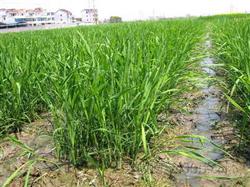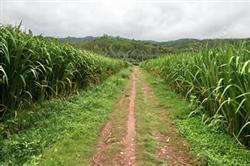Planting methods of Chinese cabbage
Cabbage is a kind of vegetable that we are very familiar with. It contains high levels of vitamins and other nutrients. Now there are various varieties of cabbage, so the place suitable for cabbage growth is also very extensive. It is planted all over our country. And now the cultivation of cabbage can not only be planted in one season, but can be planted in many seasons, so how is cabbage planted? Let's follow the editor to learn how to grow cabbage.

1. Seed selection and soil preparation
In fact, the selection of cabbage is not as complicated as everyone thinks. now Chinese cabbage seeds are clearly marked and explained. we can select cabbage seeds according to the description of cabbage seeds, planting time and local climate. secondly, if you keep your own seeds, it is best to choose seeds with full grains, fast growth, tender vegetable leaves, strong resistance and no diseases and insect pests. Chinese cabbage has a good adaptability to the environment, but in order to improve the yield of Chinese cabbage, we can choose soil with fertile soil, good water storage, strong drainage, loose and solid soil for planting. In the soil preparation, the soil should be leveled, fined, ditched and ridged, and the base fertilizer should be laid during this period.
2. Sowing and raising seedlings
Before sowing and raising seedlings, we should first set up the seedbed. The seedbed planted with cabbage should be relatively high and close to the water source to facilitate irrigation and drainage. The second is that the soil should be integrated into small particles, and then the seedbed should be raked flat. The seedbed is first watered thoroughly and then can be sown, and then the seeds are covered with a layer of organic fertilizer, or watered again with feces and urine. Finally, the seeds are covered with fine soil, and seedlings usually emerge in about four to five days.
3. Reasonable close planting
When the cabbage seedlings grow four or five leaves (excluding the first two bottom leaves), we can transplant. When pulling out the seedlings, it is best to pull them out together with the base soil, so that the cabbage seedlings are easier to survive. We planted on the whole ground at a distance of 35 cm per row and 30 cm per plant, which is not only convenient for later field operation, but also not easy to cause disease. Here, the editor would also like to remind you that if it is sunny after planting, remember to water it in time.
4. Field management
Field management is mainly divided into three stages, the first stage is the seedling management of Chinese cabbage, mainly to promote the growth of Chinese cabbage, accelerate the growth rate of Chinese cabbage, shorten the growth cycle of Chinese cabbage, we should carry out the first fertilization and weeding, we first weed the Chinese cabbage, and then irrigate it with dung and urine water. The second stage is the rosette management of cabbage, the most important of which is squatting seedlings, which means to promote the growth of rosette. We can use urea and ammonium bicarbonate for acupoint application, and combine with ploughing. The last stage is the heart management of cabbage. We need to carry out scientific management according to the law of cabbage growth. At this stage, we need at least three more fertilizers, so that nutrients can be fully utilized. At the same time, if necessary, we also need to carry out auxiliary heart management of cabbage.
5. Pest control
For the management of diseases and insect pests of cabbage, we need to carry out reasonable control according to the different stages of cabbage growth. First of all, at the seedling stage of Chinese cabbage, we mainly control aphids and cabbage green insects. Now, there are no harmful pesticides we can use this pesticide to spray, the second is the rosette stage of Chinese cabbage, we deal with and control aphids and cabbage green insects, there are also some diseases, such as downy mildew, black spot and so on. We need to use special agents for treatment and strengthen field management, the last is the Chinese cabbage heart period, the main control is also aphids and cabbage green insects, specific agents can be consulted.
- Prev

How to do well the selection, purification and rejuvenation of Zizania caduciflora
When planting Zizania caduciflora, it is generally necessary to achieve "three selections", that is, primary selection, relocation and selection. Six to seven days before harvest, the initial selection method is to select plants with fleshy stems, large stems, flat leaf sheaths and other fleshy stems, grow neatly and uniformly, and use the plants with special slices as seed plants, and the plants with multiple selection during the harvest period to remove Zizania caduciflora.
- Next

How to manage Zizania caduciflora for overwintering
Zizania caduciflora is a temperature-loving plant, which propagates asexually by tillers and tillers. It is suitable for growth at a temperature of 10-25 ℃ and is not resistant to cold, high temperature and drought. The frost-free period in the cultivated area is more than 150 days, and its leaves die after frost, and it can withstand a low temperature of-10 ℃ in dormant period. The frost-free period in northern China is short, mainly planting single-season Zizania latifolia, suitable for single-season Zizania latifolia.
Related
- Where is it suitable to grow horseradish in China? it is expected to see the middle altitude horseradish in Alishan.
- How to prevent tomato virus disease reasonably? (Control methods included)
- Many people like to plant towel gourd on the balcony. What are the main points of this method and management?
- What crops can chili peppers be mixed with?
- Fertilization techniques and matters needing attention in Tomato
- What are the grafting techniques for peach seedlings in spring?
- Harm and control methods of root swelling disease of Chinese cabbage
- What are the pests of sweet potatoes? How to prevent and cure it?
- Symptoms, causes and Control methods of navel Rot in Tomato
- The cause of "Cucumber rotten bibcock" in Farmers' planting Cucumber and its Control Plan

